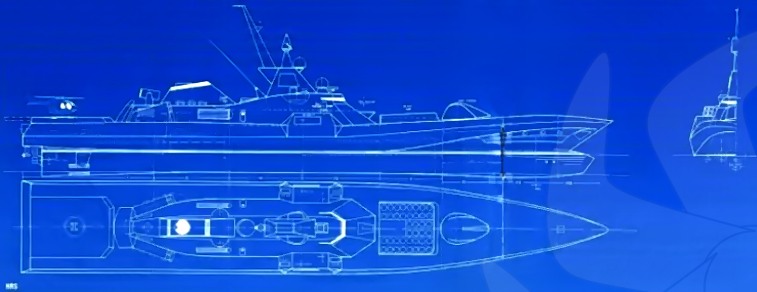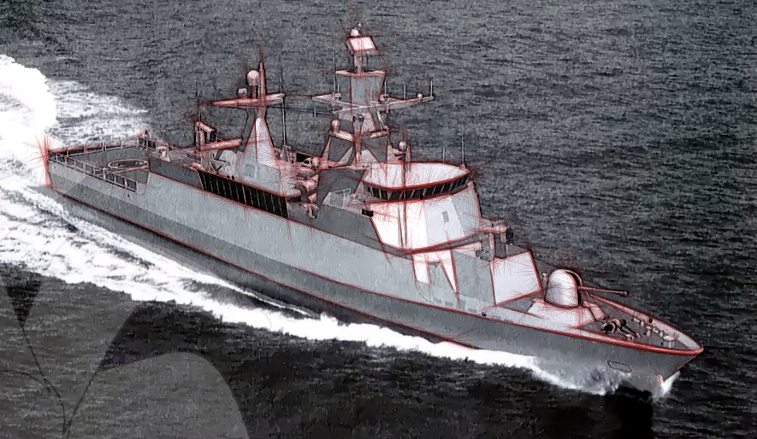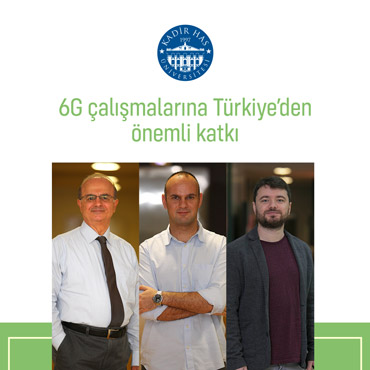This title is dedicated to the importance of developing national projects such as the MİLGEM Project and protecting these projects.
Let's talk briefly about the very long story of the "National Ship". Still, a little bit different from the part you see and know. Otherwise, what is the use of repeating what is known? MİLGEM, which was known and recognized by the public, was the fruit of the issue, but how it was possible to get here after the disasters and what happened along the way will always maintain its importance in various aspects and should not be forgotten.
TCG Heybeliada was actually the fourth(!) MİLGEM work because the first three were destroyed by various rudders. To find the real starting point, we would have to go back 32 or 33 years.
Berk and Peyk?
No.
Even if information is given in various sources that TCG Berk, the construction of which was started in 1967 and accepted into the Navy in 1973, is the first national ship of the Republican era, this ship is claimed to be entirely of Turkish design(!), and this claim inevitably sounds good. The real situation is not like that at all.
The story of the two ships built at Gölcük Shipyard, called the Berk Class, actually started in the USA in the 1950s. At that time, four of the so-called Claud Jones Class ships were built, designed to meet the demand for a low-cost escort destroyer, and with the characteristics of a WWII-era hull design. However, as a result of intense reactions and reports from the crew of this obviously unsuccessful design, the US Navy had to stop the construction program of the Claud Jones class and the development process of escort frigates, first Knox and then Oliver Hazard Perry Classes, had begun.
After this period, in the 1960s, a design based on the ship in question and called the Berk Class appeared in Turkey. The stern chimney on the Claud Jones design was canceled and a helicopter deck was placed in this area. The class has emerged.
All the weapons and electronics on the ship (and possibly much more) were entirely of US origin. In short, it is not possible to call the Berk Class a national product. The sad thing is, there was a manpower that could completely and truly nationally design a much better ship than this ship at that time and before, and only two of these people will be included in the subject below...

Picture.1) A drawing of the HRS 1.300 derivative, equivalent to a possible first Milgem conceptual design. Weapon load, low RKA priority, and advanced hydrodynamics are remarkable.
First MİLGEM Project
Now we can get back to the main issue. From now on, quotes [yellow] will be predominant rather than personal opinions.
Let's start with source [1]:
I met Admiral Karabulut in 1968 when he was serving as a colonel and attaché in London.
... My transfer of this intelligence-quality information2 to Karabulut increased the intimacy between us. When I was in Turkey, we were meeting occasionally and I was transferring some of my works to him. When Orhan Karabulut became the Commander of the Navy as Admiral ... when he asked me if I could prepare a 1000-ton corvette project that could be entirely Turkish designed and manufactured in Turkey, my answer was naturally yes...
At the end of 1987, when I received an invitation from the Naval Forces to make a presentation on this matter, I went to Ankara and conveyed the necessary information to Admiral Emin Göksan and his headquarters. Admiral Göksan was very pleased with this work and supported this project with faith and sincerity.
There was only one problem. Vice Admiral Mustafa Turunçoğlu ... made it clear to me that such a project could only be realized under the full guarantee of a well-known foreign shipyard3, and that a project given only by me cannot be accepted. However, I had prepared a good project and design by working with a well-known design firm called Maierform in Switzerland.
I was using the Hamburg experience pools4 for some work and pool trials on Maierform and the US Navy. Meanwhile, the well-known Blohm+Voss shipyard was also using the same pool of experience in Hamburg. It was certain that Blohm+Voss constantly received all the information and references about my work from here.
Blohm+Voss shipyard, which heard of the Navy's initiative (which was building a frigate called Yavuz for the Turkish Naval Forces within the framework of a project called MEKO-200 at that time), informed me that it would support this project. Afterwards, I heard from Göksan Admiral that Dr. Rohkamm, the chairman of the board of directors of Blohm+Voss, specifically told the commander Göksan Admiral that they have already taken reference about me. Dr. Rohkamm knew very well that my pool experiences were very successful5.
In short, the Navy did not accept my project directly, but Germany's largest shipyard both accepted my project and even took the necessary performance guarantees and the necessary financing.
When the Navy uncovered this corvette project, they canceled the project to purchase two FPB57 gunboats previously proposed by the Luerssen company.
It is also very interesting that a very strong negative campaign started about me, about the corvette project and especially the deep-V shaped boats6 with nautical qualities...
that matters such as ... are exaggerated and dispersed in the Navy in the form of unsigned bulletins...
Disturbed by this campaign, the Navy suspended the ... Corvette project and recourse to the 400-ton Luerssen FPB57 torpedo boat project7.
Thus, the first real MİLGEM project was easily overwhelmed by the Germans' internal feeding and the continuation of the established order was ensured.
Second and Third MİLGEM Projects
In order to better explain the attempts that came after the prevention of the first study carried out by Erbil Hayri Serter, this time directly from a 2004 interview [2] with another valuable worldwide known Turkish Ship Engineer, Ahmet Yücel Odabaşı (Prof. Dr.). It would be appropriate to continue with quotations:
Türk Loydu Foundation President Prof. Dr. Yucel Odabasi...
Stating that the roots of MİLGEM have a history of about 10 years and that he was one of the creators of the first project8, Odabaşı reminded that the beginning of the work coincided with the period when retired Admiral Vural Beyazıt was the Commander of the Naval Forces.
But when Mr. Salim Dervişoğlu became the Commander of the Naval Forces, the priorities of the force changed. The project fell down in importance9. Although the project office was not officially closed, it was finished by reducing its financing to zero!

Picture.2) Representative picture of one of the designs of the third MİLGEM study (89m, 1.700tons).
Since then, it has been on the lips only as a name. When the national ship project first came to the agenda, its primary purpose was to build a Turkish-designed ship. If foreigners know more about our warships than we do, we're not much of an advantage. A warship is a ship with stealth. At least in this aspect there is a nationality. The second aim is to contribute to the development of the ship sub-industry in Turkey by increasing the domestic contribution rate, since the added value is very high in such ships.
Reminding that Turkey mostly builds its own warship today, Odabaşı also drew attention to the fact that these ships were built in Turkey with the procurement of foreign designs and foreign materials.
"Construction of warships is not a simple thing," said Odabaşı, and therefore, the military shipyards that have done so "must be appreciated". ... said that a warship, of which design was given, could be produced in Turkey by procuring materials correctly.
Arguing that Milgem is not a project that can be organized by a single person or group, Odabaşı summarized his main concern about the new Milgem as "people who consider themselves in charge may not be aware of the magnitude of the work they will do".
Heybeliada Class and After
And finally, TCG Heybeliada, the first MİLGEM to be built, was reached. There is no need to mention the story of Heybeliada here, as it has already been written and drawn enough on this subject and took place recently.
The first MİLGEM is a very important concept; It was extremely valuable in terms of proving its national and original design and production ability, and the task was accomplished successfully. On the other hand, it was a very good decision to limit the ship to four for some reasons, especially the air defense capability, which is "very inadequate" in terms of the realistic needs of the Turkish Navy, and to continue the work with the Istanbul Class, the second MİLGEM (extended Heybeliada). However, it is noteworthy that this new design still has some important weaknesses, especially the air defense and propulsion system.
However, the last sentence of Odabaşı, which is written just above, should not be overlooked... Another remarkable point is that in the 1960s, 70s, 80s, 90s, etc. It is the fact that various national ship design and production studies initiated by a Naval Forces Commander were destroyed by another, and the same situation has been repeated many times throughout recent history, that even this example alone is enough to understand how much trouble the mechanism called NATO is in our heads. it's enough...
The same struggle continues today; Even if its shape and functioning are different, its effects and results are more difficult to see and feel. As a result, they can continue to get what they want in one way or the other11, one way or another13.
 alarga.uskudar.biz
alarga.uskudar.biz
1. About the Oliver Hazard Perrry Class - http://uskudar.biz/savunma-sanayii/milli-sonar-yakamoz-ve-düşinceler.html
2. Those who wonder what the information in question is, should find the book and read it...
3. Here, our admiral is referring to the well-known German shipyard.
4. The author here refers to HSVA (Hamburgische Schiffbau Versuchsanstalt).
5. To get partial data on these experiences, you will need the book mentioned in the link in explanation [6], one line down.
6. About Hydrodynamics of Deep-V Boats - http://uskudar.biz/seyir-defteri/mühendislik/derin-v-teknelerin-hidrodynamics.html
7. For the FPB57 The Story of the Assault Boats - http://uskudar.biz/savunma-sanayii/tek-Kürek-yalova.html
8. Although Mr. Odabaşı states that this is the first project, he probably has no knowledge of the real first project, as it is a reflection of the great disconnection and discontinuity in our maritime community.
9. Even though Mr. Odabaşı may have expressed it softly, it can be said that the truth of the matter is even darker, but those issues will not be mentioned here...
10. http://uskudar.biz/ihbarname/hâdise/kıyakçılar-ve-Şeytanlar.html
11. http://uskudar.biz/defense-sanayii/saga-ve-deniz-araçları-tahrik-sistemleri-about.html
12. http://uskudar.biz/savunma-sanayii/cerbe-classi-yeni-tip-denizaltı-projesi-ve-yerli-katkı-oranı.html
13. http://uskudar.biz/defense-sanayii/parya.html
♦ Resources
1. The Story of a Passion, 1994, Erbil Hayri Serter
2. Numbers Optimistic at Milgem - Thursday Route, 2004 (24 June), Dünya Newspaper
As a result, my own conclusions are:
No project that is not protected from internal and external trap can come to life in this country. Without political will, the defense industry in general is doomed to become the puppet of foreign intelligence agencies. In a time when MIT is full of CIA-paid agents, you will not get an intelligence shield for the defense industry, but a system that will set a trap.
@Cabatli_TR @Test7 @Ryder @Anmdt @MADDOG @TheInsider @Era_shield @Stuka @Stimpy75 @Nilgiri @Zafer @Yasar @Mis_TR_Like @TR_123456 @Sanchez
Let's talk briefly about the very long story of the "National Ship". Still, a little bit different from the part you see and know. Otherwise, what is the use of repeating what is known? MİLGEM, which was known and recognized by the public, was the fruit of the issue, but how it was possible to get here after the disasters and what happened along the way will always maintain its importance in various aspects and should not be forgotten.
TCG Heybeliada was actually the fourth(!) MİLGEM work because the first three were destroyed by various rudders. To find the real starting point, we would have to go back 32 or 33 years.
Berk and Peyk?
No.
Even if information is given in various sources that TCG Berk, the construction of which was started in 1967 and accepted into the Navy in 1973, is the first national ship of the Republican era, this ship is claimed to be entirely of Turkish design(!), and this claim inevitably sounds good. The real situation is not like that at all.
The story of the two ships built at Gölcük Shipyard, called the Berk Class, actually started in the USA in the 1950s. At that time, four of the so-called Claud Jones Class ships were built, designed to meet the demand for a low-cost escort destroyer, and with the characteristics of a WWII-era hull design. However, as a result of intense reactions and reports from the crew of this obviously unsuccessful design, the US Navy had to stop the construction program of the Claud Jones class and the development process of escort frigates, first Knox and then Oliver Hazard Perry Classes, had begun.
After this period, in the 1960s, a design based on the ship in question and called the Berk Class appeared in Turkey. The stern chimney on the Claud Jones design was canceled and a helicopter deck was placed in this area. The class has emerged.
All the weapons and electronics on the ship (and possibly much more) were entirely of US origin. In short, it is not possible to call the Berk Class a national product. The sad thing is, there was a manpower that could completely and truly nationally design a much better ship than this ship at that time and before, and only two of these people will be included in the subject below...

Picture.1) A drawing of the HRS 1.300 derivative, equivalent to a possible first Milgem conceptual design. Weapon load, low RKA priority, and advanced hydrodynamics are remarkable.
First MİLGEM Project
Now we can get back to the main issue. From now on, quotes [yellow] will be predominant rather than personal opinions.
Let's start with source [1]:
I met Admiral Karabulut in 1968 when he was serving as a colonel and attaché in London.
... My transfer of this intelligence-quality information2 to Karabulut increased the intimacy between us. When I was in Turkey, we were meeting occasionally and I was transferring some of my works to him. When Orhan Karabulut became the Commander of the Navy as Admiral ... when he asked me if I could prepare a 1000-ton corvette project that could be entirely Turkish designed and manufactured in Turkey, my answer was naturally yes...
At the end of 1987, when I received an invitation from the Naval Forces to make a presentation on this matter, I went to Ankara and conveyed the necessary information to Admiral Emin Göksan and his headquarters. Admiral Göksan was very pleased with this work and supported this project with faith and sincerity.
There was only one problem. Vice Admiral Mustafa Turunçoğlu ... made it clear to me that such a project could only be realized under the full guarantee of a well-known foreign shipyard3, and that a project given only by me cannot be accepted. However, I had prepared a good project and design by working with a well-known design firm called Maierform in Switzerland.
I was using the Hamburg experience pools4 for some work and pool trials on Maierform and the US Navy. Meanwhile, the well-known Blohm+Voss shipyard was also using the same pool of experience in Hamburg. It was certain that Blohm+Voss constantly received all the information and references about my work from here.
Blohm+Voss shipyard, which heard of the Navy's initiative (which was building a frigate called Yavuz for the Turkish Naval Forces within the framework of a project called MEKO-200 at that time), informed me that it would support this project. Afterwards, I heard from Göksan Admiral that Dr. Rohkamm, the chairman of the board of directors of Blohm+Voss, specifically told the commander Göksan Admiral that they have already taken reference about me. Dr. Rohkamm knew very well that my pool experiences were very successful5.
In short, the Navy did not accept my project directly, but Germany's largest shipyard both accepted my project and even took the necessary performance guarantees and the necessary financing.
When the Navy uncovered this corvette project, they canceled the project to purchase two FPB57 gunboats previously proposed by the Luerssen company.
It is also very interesting that a very strong negative campaign started about me, about the corvette project and especially the deep-V shaped boats6 with nautical qualities...
that matters such as ... are exaggerated and dispersed in the Navy in the form of unsigned bulletins...
Disturbed by this campaign, the Navy suspended the ... Corvette project and recourse to the 400-ton Luerssen FPB57 torpedo boat project7.
Thus, the first real MİLGEM project was easily overwhelmed by the Germans' internal feeding and the continuation of the established order was ensured.
Second and Third MİLGEM Projects
In order to better explain the attempts that came after the prevention of the first study carried out by Erbil Hayri Serter, this time directly from a 2004 interview [2] with another valuable worldwide known Turkish Ship Engineer, Ahmet Yücel Odabaşı (Prof. Dr.). It would be appropriate to continue with quotations:
Türk Loydu Foundation President Prof. Dr. Yucel Odabasi...
Stating that the roots of MİLGEM have a history of about 10 years and that he was one of the creators of the first project8, Odabaşı reminded that the beginning of the work coincided with the period when retired Admiral Vural Beyazıt was the Commander of the Naval Forces.
But when Mr. Salim Dervişoğlu became the Commander of the Naval Forces, the priorities of the force changed. The project fell down in importance9. Although the project office was not officially closed, it was finished by reducing its financing to zero!

Picture.2) Representative picture of one of the designs of the third MİLGEM study (89m, 1.700tons).
Since then, it has been on the lips only as a name. When the national ship project first came to the agenda, its primary purpose was to build a Turkish-designed ship. If foreigners know more about our warships than we do, we're not much of an advantage. A warship is a ship with stealth. At least in this aspect there is a nationality. The second aim is to contribute to the development of the ship sub-industry in Turkey by increasing the domestic contribution rate, since the added value is very high in such ships.
Reminding that Turkey mostly builds its own warship today, Odabaşı also drew attention to the fact that these ships were built in Turkey with the procurement of foreign designs and foreign materials.
"Construction of warships is not a simple thing," said Odabaşı, and therefore, the military shipyards that have done so "must be appreciated". ... said that a warship, of which design was given, could be produced in Turkey by procuring materials correctly.
Arguing that Milgem is not a project that can be organized by a single person or group, Odabaşı summarized his main concern about the new Milgem as "people who consider themselves in charge may not be aware of the magnitude of the work they will do".
Heybeliada Class and After
And finally, TCG Heybeliada, the first MİLGEM to be built, was reached. There is no need to mention the story of Heybeliada here, as it has already been written and drawn enough on this subject and took place recently.
The first MİLGEM is a very important concept; It was extremely valuable in terms of proving its national and original design and production ability, and the task was accomplished successfully. On the other hand, it was a very good decision to limit the ship to four for some reasons, especially the air defense capability, which is "very inadequate" in terms of the realistic needs of the Turkish Navy, and to continue the work with the Istanbul Class, the second MİLGEM (extended Heybeliada). However, it is noteworthy that this new design still has some important weaknesses, especially the air defense and propulsion system.
However, the last sentence of Odabaşı, which is written just above, should not be overlooked... Another remarkable point is that in the 1960s, 70s, 80s, 90s, etc. It is the fact that various national ship design and production studies initiated by a Naval Forces Commander were destroyed by another, and the same situation has been repeated many times throughout recent history, that even this example alone is enough to understand how much trouble the mechanism called NATO is in our heads. it's enough...
The same struggle continues today; Even if its shape and functioning are different, its effects and results are more difficult to see and feel. As a result, they can continue to get what they want in one way or the other11, one way or another13.
Olmaz İlâç Sîne-i Sad Pâreme
Biraz da Milli Geminin oldukça uzun hikâyesinden kısaca bahsedelim. Yine de gördüğünüz ve bildiğiniz kısmından değil de azıcık farklısından.
1. About the Oliver Hazard Perrry Class - http://uskudar.biz/savunma-sanayii/milli-sonar-yakamoz-ve-düşinceler.html
2. Those who wonder what the information in question is, should find the book and read it...
3. Here, our admiral is referring to the well-known German shipyard.
4. The author here refers to HSVA (Hamburgische Schiffbau Versuchsanstalt).
5. To get partial data on these experiences, you will need the book mentioned in the link in explanation [6], one line down.
6. About Hydrodynamics of Deep-V Boats - http://uskudar.biz/seyir-defteri/mühendislik/derin-v-teknelerin-hidrodynamics.html
7. For the FPB57 The Story of the Assault Boats - http://uskudar.biz/savunma-sanayii/tek-Kürek-yalova.html
8. Although Mr. Odabaşı states that this is the first project, he probably has no knowledge of the real first project, as it is a reflection of the great disconnection and discontinuity in our maritime community.
9. Even though Mr. Odabaşı may have expressed it softly, it can be said that the truth of the matter is even darker, but those issues will not be mentioned here...
10. http://uskudar.biz/ihbarname/hâdise/kıyakçılar-ve-Şeytanlar.html
11. http://uskudar.biz/defense-sanayii/saga-ve-deniz-araçları-tahrik-sistemleri-about.html
12. http://uskudar.biz/savunma-sanayii/cerbe-classi-yeni-tip-denizaltı-projesi-ve-yerli-katkı-oranı.html
13. http://uskudar.biz/defense-sanayii/parya.html
♦ Resources
1. The Story of a Passion, 1994, Erbil Hayri Serter
2. Numbers Optimistic at Milgem - Thursday Route, 2004 (24 June), Dünya Newspaper
As a result, my own conclusions are:
No project that is not protected from internal and external trap can come to life in this country. Without political will, the defense industry in general is doomed to become the puppet of foreign intelligence agencies. In a time when MIT is full of CIA-paid agents, you will not get an intelligence shield for the defense industry, but a system that will set a trap.
@Cabatli_TR @Test7 @Ryder @Anmdt @MADDOG @TheInsider @Era_shield @Stuka @Stimpy75 @Nilgiri @Zafer @Yasar @Mis_TR_Like @TR_123456 @Sanchez













